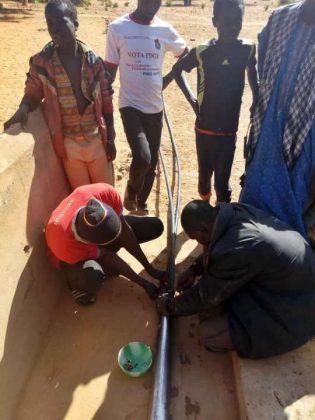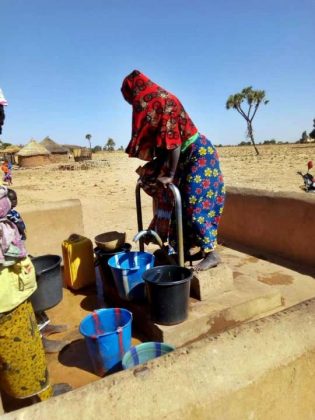This project is made possible through the partnership of WATER CHARITY and the NATIONAL PEACE CORPS ASSOCIATION. ![]()
This project has been completed. Scroll down the page to read the conclusion.
Loc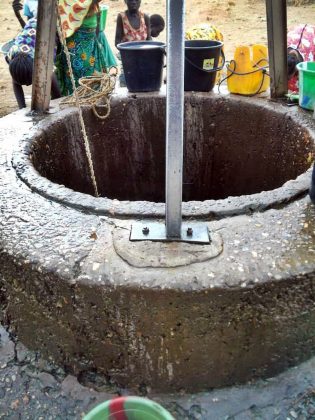 ation
ation
Village of Ourogo, Say Arrondissement, Niger
Community Description
Ourogo is a Fulani community. Most of the inhabitants are farmers, but there is still a number who are roaming herders–the Fulani tradition. The village geography is spread out with hamlets of families separated by some distance. The closest thing to a town center is a grade school. There is no running water or electricity.
Problem Addressed
The village has three Vergnet foot pumps that are not in operation, leaving the villagers dependent solely on open wells for all their water needs. The water is easily contaminated with dirt, feces, and any adjacent or wind-blown detritus. This is dangerous for everyone in the village.
Project Description
The three Vergnet foot pumps will be repaired. The steps are as follows:
1. Confirm that the on-the-ground manager (Yaya Amadou) is ready to manage the project (COMPLETE)
2. Establish a tentative time frame, ensure the manager is 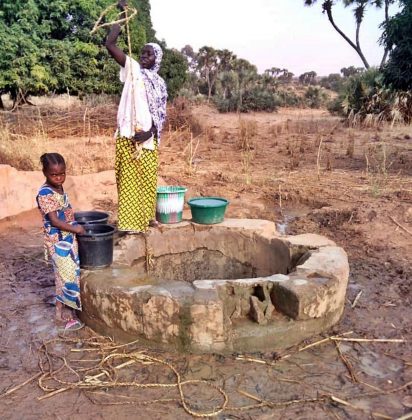 ready to take pre-and post-project photos and provide regular reports (via live WhatsApp reporting) of the work as it is undertaken and provide receipts and other documentation (COMPLETE).
ready to take pre-and post-project photos and provide regular reports (via live WhatsApp reporting) of the work as it is undertaken and provide receipts and other documentation (COMPLETE).
3. Organize a conversation with the village chief and the on-the-ground manager to ensure the village is committed to supporting the project with physical assistance during the repairs and partial payment for the repair person. The chief has already expressed his desire for the project.
4. Confirm the village has raised a portion of the funds to pay the repair person. They have already collected 65,000 cfa. The repair person says he will do the work for 100,000 cfa but this does not include transportation and other costs.
5. Organize a conversation with the on-the-ground project manager and the repair person to work through the details of purchasing and transporting parts, the timeline of the repairs, assistance needed from the village, and confirm the payment required to do the work.
6. Confirm the parts list accurately reflects the parts needed and appropriate costs.
7. Determine the cash transfer method and schedule.
8. Follow the project to completion through regular contact with the on-the-ground project manager.
9. While the project is underway, discuss with the chief and on-the-ground manager how they and the community will keep the foot pumps operational. Determine what kind of instruction will be provided to the users of the pumps to reduce wear and tear.
Community Organization
Village of Ourogo: chief, nephew, community members. They will provide cash input and any needed labor support during repairs.
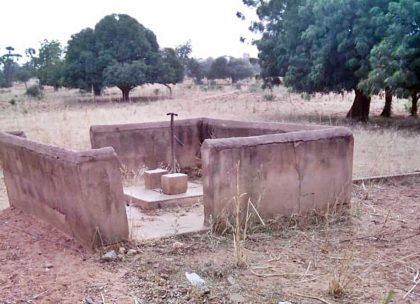 Project Impact
Project Impact
Number of people affected by the project: 500-700 people
Let Girls Learn
One of the foot pumps is located on the school grounds and when functioning the children will no longer have to spend time collecting water for school needs.
Project Administration
The project will be administered by Ken Patterson, Director of Global Grassroots Advocacy of RESULTS, Returned Peace Corps Volunteer, Niger (‘87-“90), and Associate Peace Corps Director, Niger (‘92-’95).
Monitoring and Maintenance
The Project Administrator will maintain contact with the on-the-ground manager and others in the village regarding the pump performance, proper use, and acquisition of funds for future repairs. The villagers will determine the means of acquiring additional funding for future repairs.
Project Funding
This project has been funded by an anonymous donor.
Conclusion of Ourogo Water Project – Niger
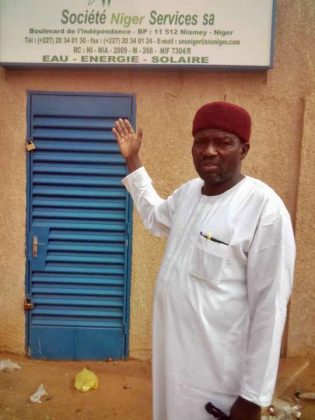 This project has been completed under the direction of Ken Patterson, Director of Global Grassroots Advocacy of RESULTS, Returned Peace Corps Volunteer, Niger (‘87-“90), and Associate Peace Corps Director, Niger (‘92-’95).
This project has been completed under the direction of Ken Patterson, Director of Global Grassroots Advocacy of RESULTS, Returned Peace Corps Volunteer, Niger (‘87-“90), and Associate Peace Corps Director, Niger (‘92-’95).
The project was designed to repair three Vergnet foot pumps.
Ken reports:
Scope of the Project
The project involved working with the village of Ourogo, where I was a Peace Corps Volunteer to repair three Vergnet foot pumps. The Vernet foot pumps had been out of service for some time. Though the wells provide clean water, when they fall into disrepair they can be quite expensive to repair. Efforts had been made by the village to repair at least one of the pumps recently, but funds were limited in the village and the pump did not function at a high level. The village was very interested in repairing the water sources to ensure clean water.To carry out this project a number of factors needed to align:
· Identification of a competent and trustworthy project manager.
· Identification of a competent repair person.
· The village of Ourogo needed to demonstrate their determination to:
o provide the village with clean water through a clear statement from the chief of the village,
o collect a financial contribution from the community, and
o provide onsite assistance during the repairs.
All these factors did come together to make this project a success.
Specific Work that Was Done
In the end, the village was able to put five-foot pumps into service using the funds from Water Charity and local contributions. Each pump required different levels of parts and service. The spreadsheet of expenses describes the costs for each of the pumps repaired. In all cases the repairs involved pulling the pump mechanisms from the sealed tube wells, replacing parts, reassembling the pumps, and testing them.How the Work Progressed Through Each Stage
Advance Verification
Before sending money to Niger, I re-verified with Yaya Amadou that the village was ready to take on this project and that he was ready to manage it. We have a video of the Chief of the village verifying his desire for the project and his thanks for making it happen. Yaya also confirmed that he was ready to manage every aspect of the project, including purchasing the parts, managing the repairperson, being on-site for all the repairs, and working with the village to do the work and keep the pumps in good repair.Sending Funds
After receiving the funding from Water Charity, I did additional research on how best to send the money. I chose Ria as a method because of the low costs and good ratings. I sent $500 to start, which transferred to Yaya Amadou, the project manager, very easily. He opened a savings account on January 4, 2019, and deposited the money into it. The second transfer was not as easy—I was told that I could not do it online—that I would have to do it in person (the transfer was flagged by Ria’s review team—perhaps because of the amount, perhaps because it was Niger). So, I went to a local agent and made the transfer. The costs were slightly higher, but still much cheaper than Western Union. Yaya deposited the funds into the savings account.
Funding for the project included a 65,000 cfa contribution from the village. The money was collected by Suley Saidou, a local leader, and given to the Chief of the village. Yaya traveled to the village to collect the village contribution and deposited it into the savings account before any work began to ensure that the village made its financial contribution.
Purchasing Parts
Yaya and the repair person went to the agency in charge of hydraulic development on January 10, 2019, and purchased the parts from the original estimate, and some additional parts suggested by the repair person. The village has a three-year warranty on the rubber bladder (baudruche) from the bottom of the well—the most expensive part.Repairs
Yaya traveled to the village on January 15, 2019, and work with the repair person and the village to repair the five-foot pumps on January 16 and 17, 2019. The repair effort started out with a gathering of community leaders and prayers for a successful project and thanks to God for the opportunity (video). Yaya then went through the parts purchased one by one with the village to show that every one of the pieces had been purchased. The work then proceeded, one-by-one, fixing the pumps.Report and Documentation
On January 18 and 19, 2019 Yaya provided all the receipts and a spreadsheet detailing the parts used to repair each of the pumps.
Results of the Project
The result is that the people of Ourogo have five water points in the village where they can get clean water. They also have a warranty for the most expensive parts and an account with 240,000 cfa (about $415) for future repairs. The people of Ourogo are extremely grateful for the resources and support to bring clean water to the village. I even got a message from someone who grew up in the village and now teaches English in the capital, “I would like to thank you for offering drinkable water to my parents. I highly appréciate it.” When I thanked Yaya for his good work in managing the project and providing documentation he said, “C’est à nous de Vous remercier car toute la population de l ensemble du village de Ourogo boit de l’eau potable aujourd’hui.” Translation: It is for us to thank you because all the population of the entire village of Ourogo now drink clean water.Some other insights:
· The community seems to value clean water more than when I was there as a PCV back in 1987. I believe there will be a greater incentive to keep the pumps in repair not that they are functioning. The village also has a fund to make reparations in the future.
· I had built money into the project to provide compensation and reimbursement to Yaya Amadou, the project manager, but because it is his village, and he is a village leader affiliated with the chief of the village, he said that he viewed his time and any out-of-pocket expenses as his contribution to the project.
· The village of Ourogo has some interpersonal & family divisions that have existed from well before the time I was a volunteer. It was always a challenge to navigate this. My remedy was to work with the village chief, who was on one side of the division but to be sure that the other side of the village was not left out of opportunities. The two sides did work together for this project. Suley Siadou, on one side of the divide, collected the village portion of the money for the project and gave it to the Chief on the other side. The village also worked together on the reparations. It was good to see their joint work and excitement on the project. Part of the success is due to the skillful work of Yaya Amadou—working with an even hand, transparency, and fairness.
We extend our thanks to Ken for completing this important project.
